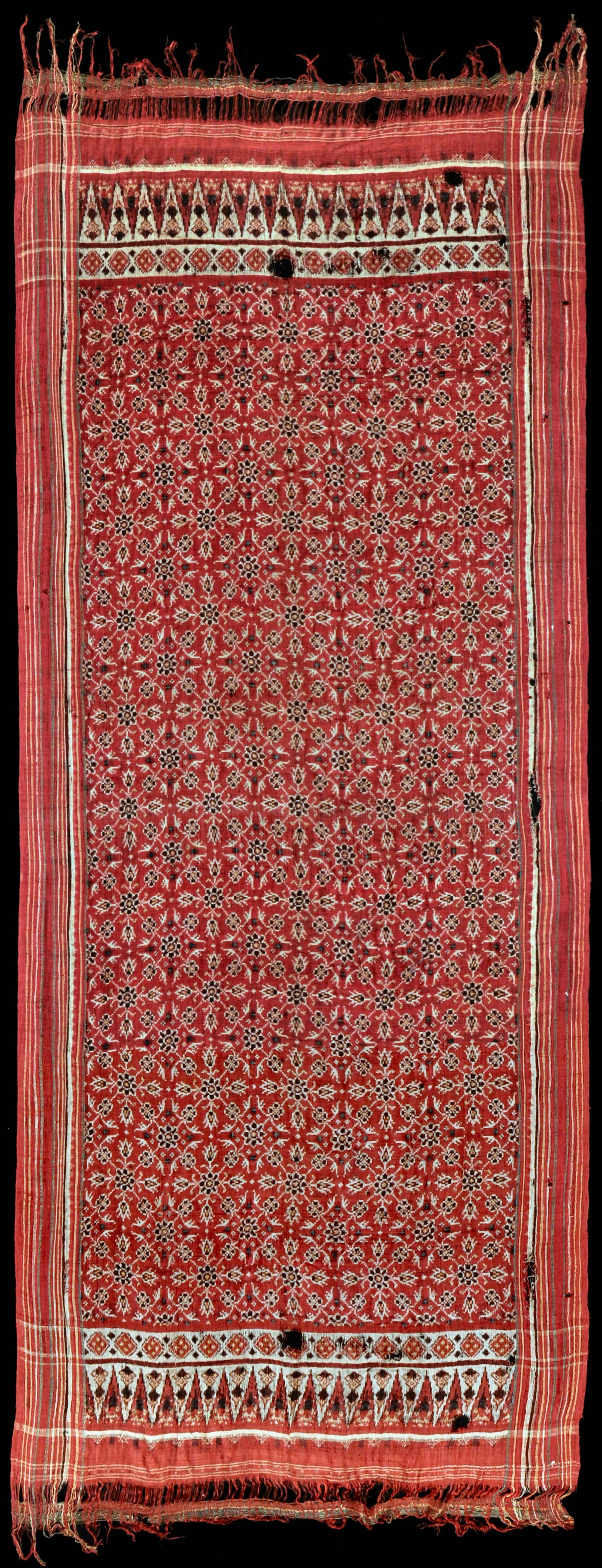| |
 mouse over to magnify mouse over to magnify
| | | | 061 India, Gujarat
Patolu
| | Locale: | Patan region. | | Period: | 18th or early 19th c. | | Panels: | 1 | | Design: | Field decorated with circular floral pattern called jilamprang, which in Gujarat is known as chhabdi bhat or basket pattern. It represents an eight-petalled lotus, with buds and flowers radiating from it, encircled by the curvilinear outlines of leaves. Border are triangles alternated with inverted triangles called tumpal, a motif called tumpal. It was this patola type more than any other, that served as an inspiration to weavers all across the Indonesian archipelago. | | Size: | 103 x 445 cm (40.5 x 175.1 in) | | Yarn: | Silk, hand-spun | | Comment: | Several small holes, a few tears in the longitudinal border, one with old (clumsy) repair. The jilamprang covered field however is almost entirely intact and has lost none of its visual impact. Weaving is fairly loose and gauzy, giving the impression of raw silk. | | Background: | Additional information in chapters on India and Gujarat. | | Published: | Woven Languages, 2014.
Ikat Textiles of the Indonesian Archipelago, 2018.
| | Compare: | 062 063 307 | | Sources: | Buehler and Fischer, The Patola of Gujarat, Motif Type 11d, Plate VIII with slight variation in border. Guari Parimoo Krishnan, The Divine Within, page 219. Dawson, Traditional Indonesian Textiles, Fig. 3. Khan Majlis, Woven Messages, Fig. 4. Nearly identical to Powerhouse Museum No. A10240. | | |
 ©Peter ten Hoopen, 2025
All rights reserved.
|
|


